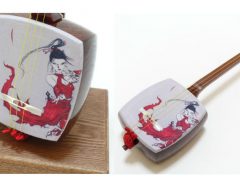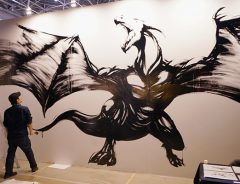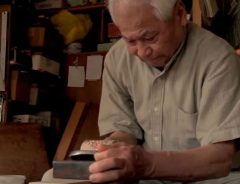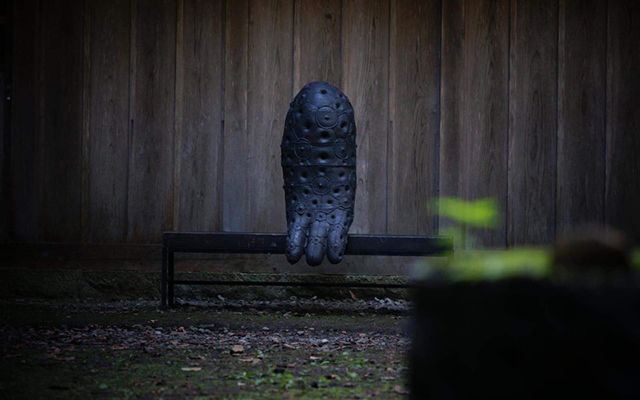- Source:
- / @kulanla / Togetter / Nakanojo Biennale / Nobuharu Asano
- Tags:
- Art / art exhibition / Chikato Shrine / Gunma / Gunma Prefeture / Ken Okada / Nakanojo / Nakanojo Biennale / Nobuharu Asano / Sculpture / Shinto shrine / Shrine / tricksters
Related Article
-

Final Fantasy Illustrator Yoshitaka Amano Designs Awesome Original Ninja Character For Beautiful Shamisen
-

PERSONA5 the Animation EXHIBITION In Tokyo and Fukuoka, Artworks Book To Go On Sale
-

Top Artwork Selections Of Japan’s 44th Tokyo Design Festival
-

Give Your Space An Elegant Touch With Handmade Origami Animal Sculptures
-

Watch A Visually Stunning Display Of Hakone Marquetry By A Japanese Crafts Master
-

The Salary of a Japanese Mascot Revealed



Twitter user @kulanla, who was visiting Chikato Shrine in Nakanojo, Gunma Prefecture last weekend, came across something completely unexpected...
"I went to a Shinto shrine today and was intrigued by a mysterious object."
A reaction which was clearly shared by many online, since the tweet soon went viral, with nearly 41,000 likes and close to 27,000 retweets as of this writing.
However, as @kulanla revealed in a subsequent tweet, things got stranger still:
"You know that shrine with the mysterious object which I tweeted about yesterday? When I tried to throw a coin into the (offertory) box, it bounced off and didn't go in. Just as I was saying to myself: "No way," my phone suddenly rang. This was giving me the creeps, so I put in a 100 yen coin and paid my respects."
In addition to simply voicing fear, some of the more interesting reactions were:
---"This is definitely something from Cthulhu mythology!"
---"Looks like something that came out of a dream."
---"I'm not too sure what it is but it's cute!"
---"I bet it comes to life at night!"
So then, what is this mysterious object sitting on a bench in a small Shinto shrine in the mountains of Gunma Prefecture? And what about the other objects?
As it turns out, Chikato Shrine happens to be one of the 51 locations for the Nakanojo Biennale, a contemporary art festival, now in its sixth iteration, bringing together hundreds of artists, both local and international, to exhibit pictures, photos and sculptures in the areas around Nakanojo Station, as well as the hot springs town of Shima Onsen and Sawatari Onsen.
Unaware of the ongoing exhibition, our easily-irked Twitter user didn't realize that this was, in fact, an art installation by sculptor Nobuharu Asano.
Source: Nobuharu Asano
Source: (C) Ken Okada
Source: Nobuharu Asano
Source: Nobuharu Asano
Source: (C) Ken Okada
Source: (C) Ken Okada
In an interview with Grape Japan staff, the artist explained that the seated figure is a Trickster:
But why did Asano choose a Shinto shrine as the location for his installation, and why this particular shrine?
To learn more about Nobuharu Asano's works, please go to his website. You can see "Festival of Nothingness" as well as other works of art at the Nakanojo Biennale between now and October 9. Nakanojo is known as one of the most beautiful villages of Japan, so it is worth the trip if you are planning a visit to Gunma Prefecture.
Source: Nobuharu Asano
Note: All photographs in this article are used with the permission of Nobuharu Asano.